|
John Tyman's Cultures in Context Series Torembi and the Sepik A Study of Village Life in New Guinea |
|
Topic No. 24: Traditional Dance Forms in Modern Contexts ~ Photos 496 - 516 |
|
John Tyman's Cultures in Context Series Torembi and the Sepik A Study of Village Life in New Guinea |
|
Topic No. 24: Traditional Dance Forms in Modern Contexts ~ Photos 496 - 516 |
 |
| 497. Sing sings may also incorporate dramatic presentations which recall tribal myths and legends. I attended one performed at Service Camp (alias Namagua), a village a short distance north of Torembi. Its “Western” name reflected its location near the site both of a World War 2 air base and a recent oil exploration camp. (Flashback to opening of haus tambaran) |
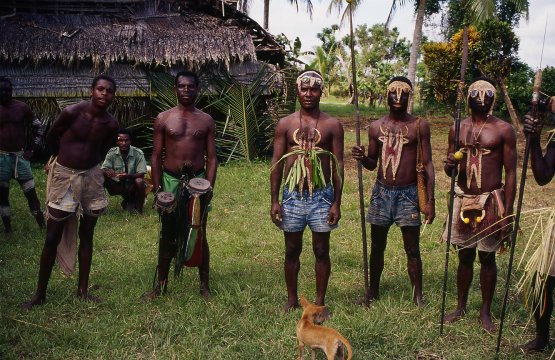 |
| 498. The main characters in the drama were all males, and they wore outfits which blended old and new. |
 |
| 500. This presentation recalled the time long ago when a boy of 16, who had yet to be initiated, saw an ancestral spirit entering the Spirit House. |
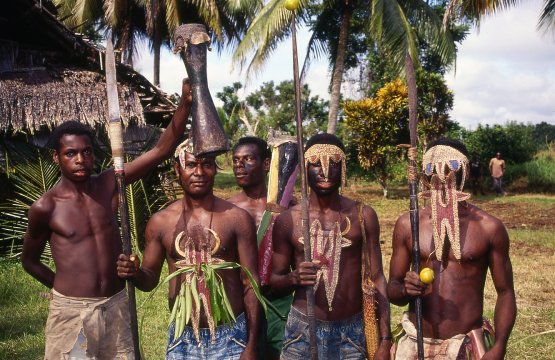 |
| 501. Some of the participants carried kundu drums to provide the rhythm for dancing. |
 |
| 502. But the underlying tone and sense of mystery were established by flute players hidden from view inside the Spirit House. The spirits were summoned by them. |
 |
| 503. The masked figures representative of the spirits then left the Men’s House to dance outside, and it was here that they were seen by a boy long ago. |
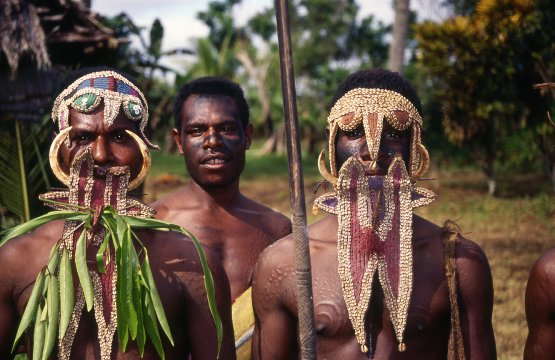 |
| 504. The punishment due to any woman or child looking at an ancestral spirit was death, and the boy was promptly speared by two male witches. |
 |
| 505. His family mourned his death, covering their bodies with clay. |
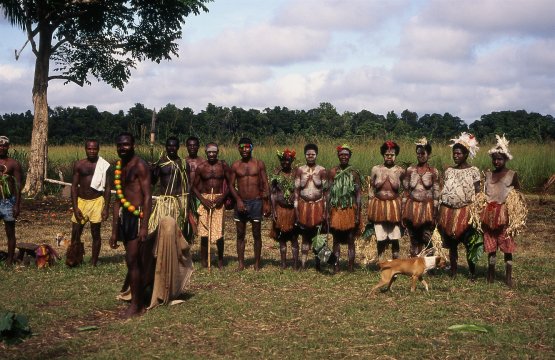 |
| 506. A public meeting was then called to decide on an appropriate course of action. |
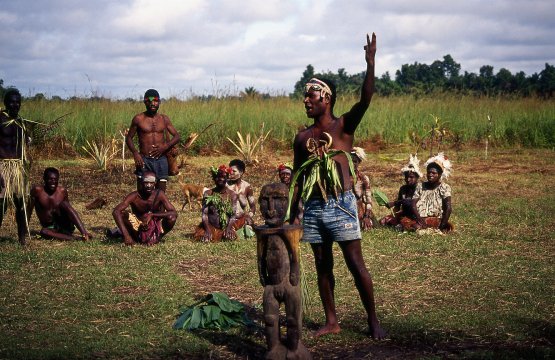 |
| 507. The matter was debated heatedly for hours (apparently) and it was eventually determined that the boy’s parents should be compensated by a payment in kina shells. |
 |
| 508. The drama over, the caste posed for photographs, before returning to their homes for lunch. (Also see video extract number 41) |
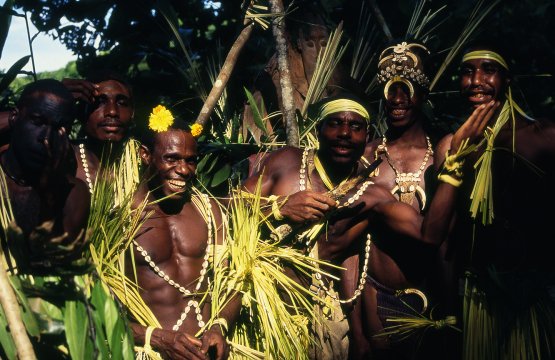 |
| 509. A rather different sing sing (also in 1994) was planned by the young men of Torembi 3 as a fund- raiser. |
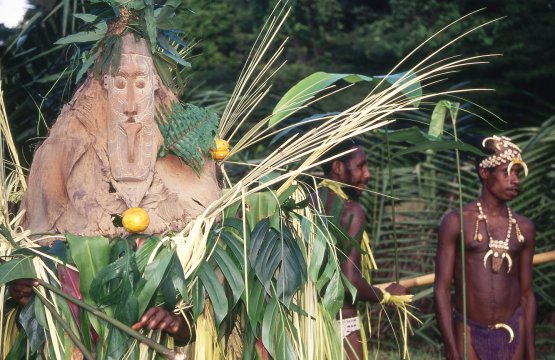 |
| 510. They were all either members or supporters of the local soccer club, and they planned to screen off an area with palm fronds so they could charge admission. |
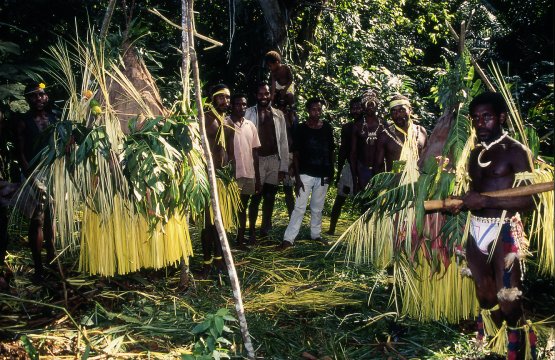 |
| 511. They would be dancing in the open, but they hid in the nearby forest at the start, while they prepared their “bilas” – their decorated costumes. |
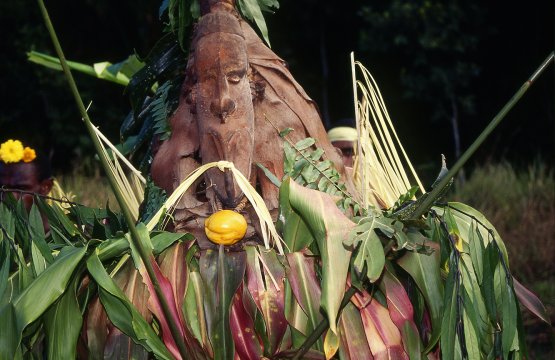 |
| 512. The mwai masks to be worn by those impersonating ancestral spirits were borrowed from the Spirit House. |
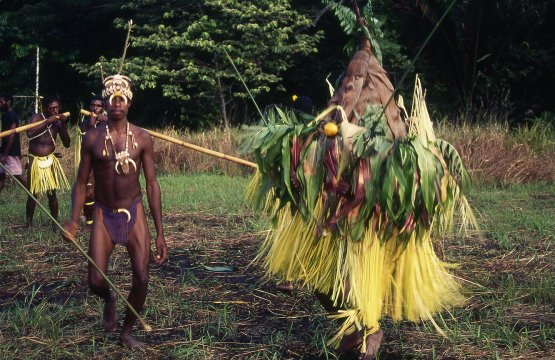 |
| 513. These were brightened up with garlands of fresh leaves and fruits, plus brand new “grass” skirts. |
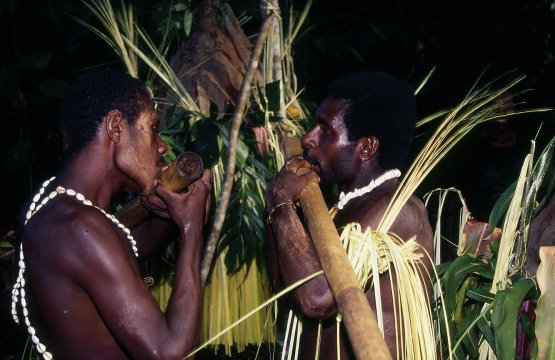 |
| 514. The music was provided by two young men with long flutes. It would have been a serious offence in the not too distant past to bring these out into the open, but times have changed. |
 |
| 515. The spirits and their attendants then danced around the soccer field for an hour or so … rehearsing for their performance on another day. |
![]()

![]()
Back to
Cultures in Context Intro: Photos & Recordings
![]()
Text, photos and recordings
by John Tyman
Intended for Educational Use
Only.
Copyright Pitt Rivers Museum,
Oxford University, 2010.
Contact Dr.
John Tyman for more information regarding licensing.
![]()
Photo processing, Web page layout,
formatting, and complementary research by
William Hillman ~ Brandon, Manitoba
~ Canada
www.hillmanweb.com